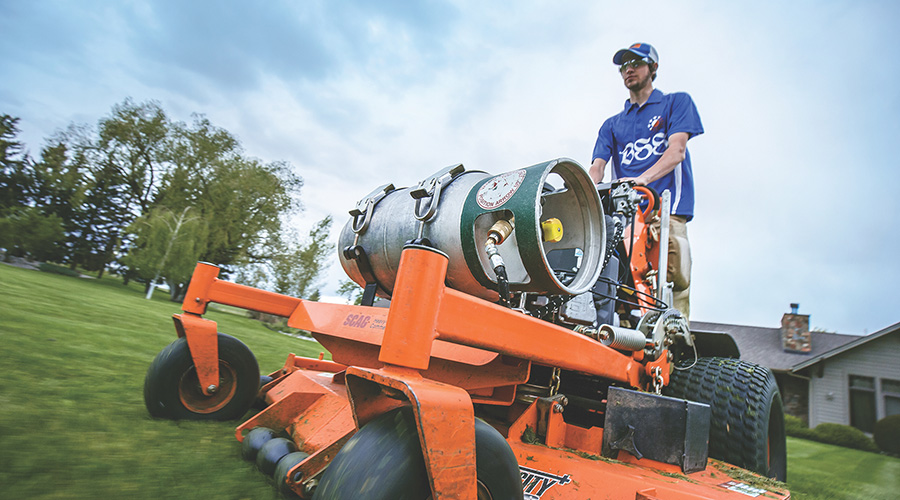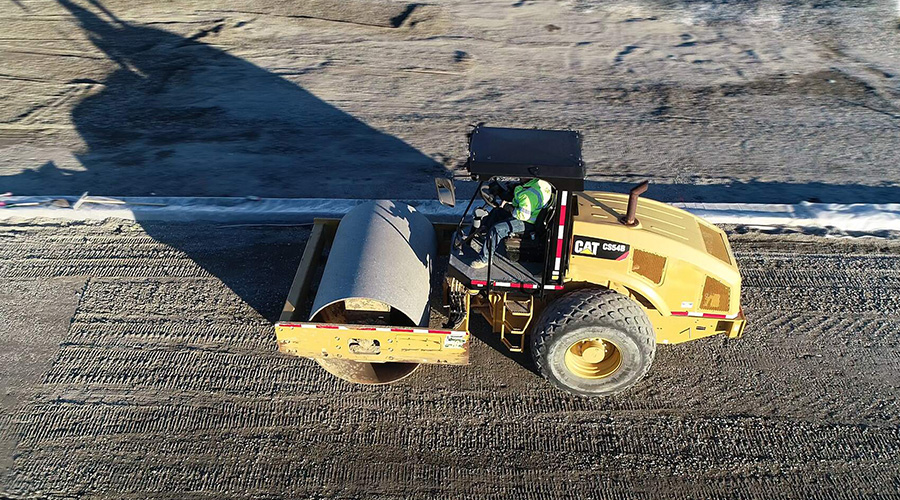Making Mowers that Meet User Mandates
Manufacturers speak about efforts to produce mowers and tractors that deliver what users want — efficiency, safety, speed and power
Mowers and tractors form the backbone of most grounds care operations. Mowing equipment — often a high-ticket investment for grounds care departments — is central to carrying out grounds care duties smartly and efficiently. To accomplish these goals, managers are under pressure to look for key qualities in their mowers: reliability, performance and the lowest possible cost.
Performance
Power steering and tilt-steering wheels have been standard on mowers and tractors for many years. While such features certainly boost performance and comfort, a new generation of features is designed to aid operator performance even more.
“When you’ve got an inexperienced operator who’s not paying attention and has put the tractor under a heavy load, he’s going to stall the engine,” says Terry Brown, compact tractor product manager for John Deere. To prevent such problems, Deere and other manufacturers use hydrostatic transmissions.
One benefit of hydrostatic transmissions is a nearly infinite range of gear ratios. Brown adds that Deere’s hydrostatic transmissions can communicate with the engine to help prevent stalling under heavy loads.
Sage Marie, public relations associate with Honda Power Equipment, says the company’s walk-behind commercial mowers also have hydrostatic transmissions, though for very different reasons.
“When you’re in heavy grass or brush and want to slow the mower’s drive speed without slowing the blade speed, a hydrostatic transmission lets you do that,” Marie says.
Also popular on many commercial-grade, front-deck mowers are decks designed pivot upward to a 90-degree angle. This design feature allows for improved mower transportation and storage, and simplifies blade changes and other deck maintenance.
Some companies offer hydraulically lifted decks, while others have foot-controlled lifts that temporarily lift decks over curbs, sewer grates and other obstructions.
James Burnside, product manager at Kubota Tractor Corp., says any feature that makes maintenance easier is a boon. For quick deck access, some manufacturers provide a simple jack that operators use to raise the deck without tipping the mower into a 90-degree position. Kubota’s solution is to use anti-scalping wheels as levers. The wheel axle on some front-deck mowers uses a center-mounted pivot and hand-turned crank to ratchet the deck into the air and grant access to the blades.
Nearly all manufacturers have designed newer models to allow quick access to filters, fuel caps and other regularly accessed parts.
Safety
For several years, mower and tractor manufacturers have increased the safety features available on their machines. Because mower rollover is one of the greatest causes of injury and death while mowing, manufacturers also have aimed to reduce the chances of operator injury in a rollover accident. Today, rollover protection structures (ROPS) are found on most tractors and many mowers.
While ROPS devices are not mandated on zero-turn mowers, Kubota has elected to put them on its mowers anyway. Burnside says the resulting addition of $400 to the retail price doesn’t seem to have affected sales.
Manufacturers also continue to work on lowering the center of gravity to help prevent rollovers, says Ruthanne Stucky, director of marketing for Grasshopper Mowers. Also central to safety and comfort concerns for Grasshopper is retaining stability while maximizing operator visibility.
Manufacturers also subject their products to a battery of tests to ensure they perform as designed. For example, Kubota uses a tilt-table test in which mowers and tractors are driven onto a large, hydraulically controlled table. The table is then tilted incrementally until the vehicle loses stability.
Burnside says there is a park across from their corporate offices where Kubota’s engineers test products in a variety of real-world scenarios. Deere’s Brown says his company performs similar tests, including in-house and independent laboratory tests.
Most mower and tractor manufacturers seek certification from several different organizations, including the American National Standards Institute, American Society of Agricultural Engineers, Society of Automotive Engineers. These certifications are voluntary, so managers should look for manufacturers who willingly subject their equipment for testing. Mowing products also are subject to applicable OSHA regulations.
Environmental Concerns
One sign that environmental concern is of growing importance to manufacturers and facilities is the use of diesel engines. Long used in tractors because of their high-torque output, diesel engines are standard on greater numbers of riding mowers as well. While diesel engines often cost more than gasoline-powered engines, they are more fuel-efficient and have greater longevity.
“Diesel engines often last up to 300 percent longer than gasoline engines,” Burnside says. “We’ve seen engines that last to 25,000 hours.”
Stucky says Grasshopper is always looking to boost fuel efficiency and even offers a dual-fuel mower powered by standard fossil fuels or propane. With the option of running on propane, the machine can continue to work even on ozone non-compliance days.
Compatibility
Grounds care managers with large equipment fleets should investigate the interchangeability of accessories within a manufacturer’s line. For example, Brown says some Deere hitches ensure maximum implement interchangeability. And manufacturers often offer snow-removal equipment, sidewalk brushes and other devices that maximize a mower’s or tractor’s flexibility. If a facility needs year-round use from its equipment, managers should look for mowers with optimized interchangeability.
Finally, managers should also consider purchasing equipment that only uses one fuel type, if possible.
“People are concerned with mixing gas and diesel units among their fleets and typically go with one or the other,” Stucky says. This is particularly applicable for managers with tractors, as the burgeoning supply of diesel mowers lets managers streamline their purchasing, operating and maintenance efforts.
The Customer’s Voice
Mower equipment manufacturers try to take user’s needs to heart when producing mowers and tractors. To ensure that consumers are satisfied by new products, most manufacturers perform consumer surveys before unveiling new equipment. James Burnside, product manager for Kubota, says the company does extensive market surveys before even beginning development on the latest design.
John Deere conducts similar market surveys using customers culled from the company’s dealer base.
“When we started to work on the TEN-series [tractors], we had a group of customers concerned with stopping power.” says Terry Brown, Deere’s product manager for compact tractors.
Brown says some customers liked powerful stopping ability, while others felt it could be too abrupt. When confronted with this problem, Deere’s engineers decided to let the tractor operator control the rate of acceleration and deceleration.
“They designed the Motion-Match, a switch that gives the customers control,” Brown said. “Now they can set it so that the rear wheels almost lock up when stopping, or they can choose much gentler settings.”
|
Related Topics:











